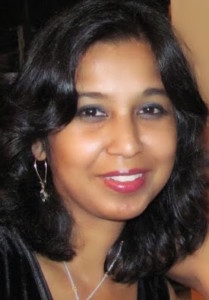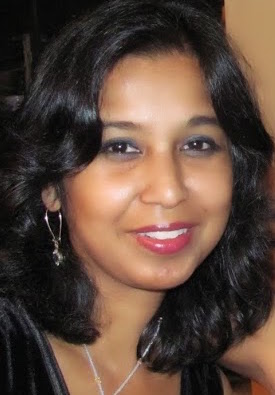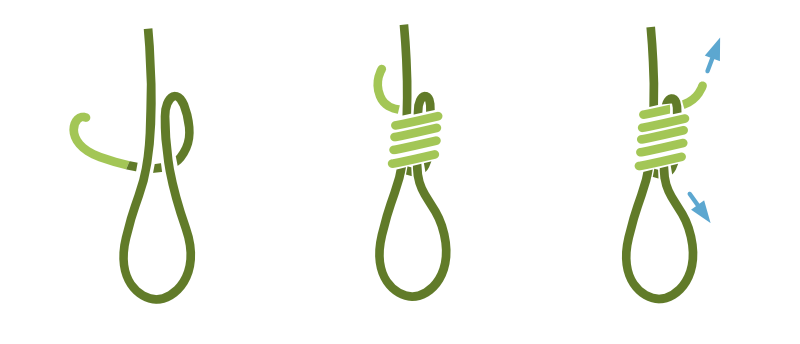By Rajashree Ghosh
INDIA New England News Clumnist
In India as in other countries when you hear news from Reuters you know it is authentic and reliable. It’s editorial policy states: “We are committed to reporting the facts and in all situations avoid the use of emotive terms.”

The philanthropic arm of Reuters is Thomson Reuters Foundation and are the world’s biggest news and information provider and are registered as an independent charity in UK and USA. And then there is Trust Law. Under the Reuters umbrella Trust Law is the Foundation’s global pro bono legal program that connects NGOs with the best legal assistance. They also provide legal research and offer training worldwide.
Given that all the agencies under Reuters are committed to value-neutral news, there was much noise when it’s opinion polls were released. In 2011 Trust Law published a poll report that declared India as one of the worst countries to be a woman. The results drew public outrage as much as it did because they were shared at an opportune moment very close to the G20. At the time Afghanistan topped the list and India ranked fourth. Of course, there were others who were convinced of the study.
It was hard to not be defensive. Drawing on my extensive experience in social development for years and working on gender issues for even longer, there were several questions about the 2011 poll. For instance, how was it conducted and analyzed; how were categories arrived at, what did “quality of health” mean – access, service delivery, subjective or objective measures?
Gleaning through the poll report, there were questions about the rigor, validity, and reliability of the poll remain unanswered. How was the poll conducted and analyzed? How were the six categories arrived at? Within those categories what does “quality of health” entail – access, service delivery, subjective or objective measures? What were the sampling methods, how were data aggregated, stratified, weighted? Were national policies and legal measurements surveyed? Were local and community level action taken into account? How are we to understand that this is a representative and generalizable sample?
In 2018, a repeat survey was done. The reason being that they “wanted to see if the situation for women had changed in the past seven years…” The poll surveyed 548 experts on six different indices – healthcare, discrimination, cultural traditions, sexual and non-sexual violence, and human trafficking. They were first asked to name the five most dangerous countries from the list of 193 United Nations member states.
This poll declared India to be the worst country for women. While there were some who did a “I told you so,” there were others who made their disagreement known. The Government of India certainly fell in the latter category.
And I still have questions, not very different from the questions I had from their prior poll. How were the 548 respondents chosen? I am not questioning their credibility but could we perhaps be informed about the gender composition of the group? Were there adequate numbers of women and men? Were some of them the same from the previous poll? How about perceptions from varied community members (castes, economic strata and religious affiliations)? In the entire exercise of accumulating opinions is that there is an assumption that there are “problems” in “other” countries.
One of the questions that respondents were asked to rank was related to sexual violence: “In your view, what is the most dangerous country in the world for women in terms of sexual violence? This includes rape as a weapon of war, domestic rape, rape by a stranger, the lack of access to justice in rape cases, sexual harassment and coercion into sex as a form of corruption.”
India ranks the worst. India’s National Commission for Women pointed out that if there has been a surge in data on rape, harassment and other forms of violence against women it is because more cases are being reported. Public outrage that followed the Nirbhaya case drove some albeit slow changes in law. Of course, there is work to be done – we recognize that. And again, my question would be what reasons were provided by respondents for the choices they went with?
Much of the data seems to be drawn from what appears most on media. For instance, USA features on the list only because there has been widespread reportage on #MeToo movement. In another context as a developed nation, with a strong history of feminist principles, this country led several women centric programs around the world and rarely features on such polls. Don’t get me wrong, the current #MeToo campaign only takes its values that support pan gender equality and respect even further. However, in prior studies, USA has always been presented as the champion of women’s rights. It is only now that there has been some self -reflection on what goes on within the country and with that there has been an increased data and reporting.
There is deep seated and persistent gender discrimination in all countries and cultures, including India. And each country has its own social, historical and political context that needs to be taken into account in any study. Ruminating a few years ago with Dr. Sarita Bhalotra who is a physician and a former colleague at Brandeis University and together we felt that every indicator in a poll is complex. For example, in the Indian scenario, the sex ratio was skewed at 933/1000 males in 2001, and in 2011 it increased to 940/1000 males. The Noble laureate Amartya Sen stated that the pattern of gender inequality shifted from ‘mortality inequality’ to what he calls ‘natality inequality’ due to female feticide after the facility for antenatal sex determination became available. Others suggest that parents are not substituting prenatal for post-natal discrimination against girls but combining the two strategies. In a study conducted by the US National Library of Medicine and National Institute of Health (http://www.ncbi.nlm.nih.gov/pmc/articles/PMC2377330/), the relative contribution of these modes of discrimination, to the unbalanced sex ratio in India, is still unresolved. The point here is that every indicator needs the reinforcement of qualitative and quantitative opportunities for conversation and the poll does leave us hanging there.
As far as sex trafficking is concerned, India is a sending, receiving and transit nation along with other countries such as Thailand, Philippines and the Middle East. Belgium, Germany, Greece, Israel, Italy, Japan, the Netherlands, Thailand, Turkey and the United States; countries ranked “very high” and requires concerted global efforts to combat this scourge, the vast majority of whose victims are women from birth to death.
Let’s take the indicator on women’s political participation. There is much to be explored. Unlike in Saudi Arabia where women were given the right to vote in 2011, in India every citizen –man or woman could vote after Independence in 1947. And now that women in Saudi Arabia can drive, the country is receiving much praise from around the world. Yet an activist such as Al Fassi was detained. She has been incessantly fighting to secure rights for women including right to participate in municipal elections.
In the Indian political scenario and per a UN Women report last year 19.7% of the region’s ministerial positions are held by women. And women occupy 44.2 per cent of total elected representatives at the local level (“panchayat”). These are significant numbers but it is also recognized that there is room for improvement.
Numbers aside, what is the broad message about the opinion poll? Thomson Reuters Foundation effort provided quick information – that is what a poll does. It is about “what” and “how much” and cannot be expected to impact public action or policy change – at least in this case.
Changing the narrative to gaining insights on life experiences might allow for including complexities inherent in communities. Another approach would be to engage in participatory discussions that are more inclusive of “different cultures” and voices that promote egalitarian transformations. Why not have additional questions on ground level activism and impact on policy? There is every need to report what goes on at the grassroots level, policy level and a deeper and immersive effort needs to be conducted. My bias says, we root for a more grounded, holistic, insightful study!
(Rajashree Ghosh is Resident Scholar at the Women’s Studies Research Center, Brandeis University.)












Rubbish! India has always been very respectful towards women. There is child abuse and rape going in other countries but it is not international news. In a heavily populated country this does not happen simply that firstly it is not the culture and secondly it would be very hard to carry out such acts.
There were English missionaries that got away with such acts in the past. Look at how many children are abused by the priests of the church in USA and other countries and nothing was done about it.
This is a set up job to make India look bad by countries that are jealous of it doing well.